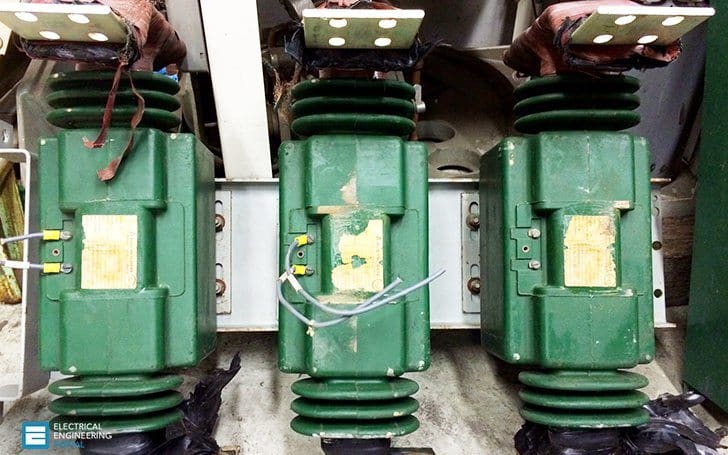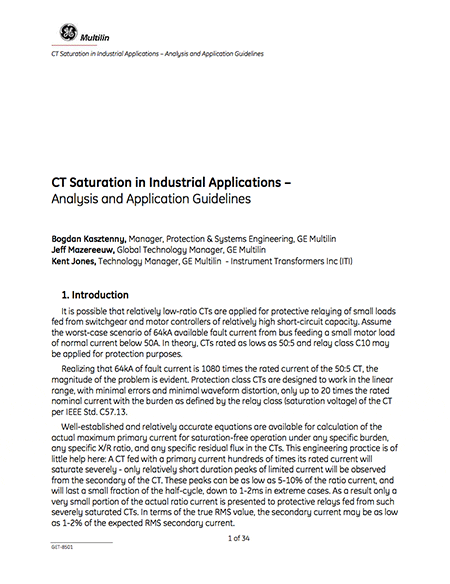Introduction
It is possible that relatively low-ratio CTs are applied for protective relaying of small loads fed from switchgear and motor controllers of relatively high short-circuit capacity. Assume the worst-case scenario of 64kA available fault current from bus feeding a small motor load of normal current below 50A.

In theory, CTs rated as lows as 50:5 and relay class C10 may be applied for protection purposes.
Realizing that 64kA of fault current is 1080 times the rated current of the 50:5 CT, the magnitude of the problem is evident. Protection class CTs are designed to work in the linear range, with minimal errors and minimal waveform distortion, only up to 20 times the rated nominal current with the burden as defined by the relay class (saturation voltage) of the CT per IEEE Std. C57.13.
This engineering practice is of little help here: A CT fed with a primary current hundreds of times its rated current will saturate severely – only relatively short duration peaks of limited current will be observed from the secondary of the CT. These peaks can be as low as 5-10% of the ratio current, and will last a small fraction of the half-cycle, down to 1-2ms in extreme cases.
As a result only a very small portion of the actual ratio current is presented to protective relays fed from such severely saturated CTs. In terms of the true RMS value, the secondary current may be as low as 1-2% of the expected RMS secondary current.
Authors: Bogdan Kasztenny, Jeff Mazereeuw and Kent Jones (GE Multilin)
| Title: | CT Saturation in Industrial Applications – Analysis and Application Guidelines – GE Multilin |
| Format: | |
| Size: | 720 KB |
| Pages: | 34 |
| Download: | Right here | Video Courses | Membership | Download Updates |



very useful.
Comments very utiles for power Engineers ! I tel you that after acquired 45 Years experience on VHV & Strong currents & Power generation !
very good informative article about CT saturation
thank you